Suzuki Gixxer SF 250 Review | Text, Pictures, and Videos By: Syed Shiraz
This Suzuki Gixxer SF 250 review will cover the bike’s 0-100, 0-140, top speed, ergonomics, vibrations, ride quality, handling, tyre grip, brakes’ performance, fuel efficiency, headlamp brightness test, pillion comfort, and probably a couple of things more that I might have forgotten in this sentence.
Also, over the past week or so, I have posted seven videos, and though I shall embed a few of them in this review below, those who’re allergic to reading may head straight to my channel to view them. But those of you who still feel a write-up to be more tangible than a video may please read on.
Suzuki Gixxer SF 250 Review: Design & Build Quality
Beauty and lust, they say, lie in the eyes of the beholder. And unless that beholder is partially blind, completely sterile, or just plain stupid, he will certainly find the design of the Suzuki Gixxer SF 250 to be damn good! Because this bike really is one gorgeous number. No second thoughts on it.

Many might not realize that it wouldn’t have taken much for the design team to go overboard, and spoil it (the RS200 comes to mind), and I am glad that Suzuki’s design team acted with just the right amount of restraint, where it was needed. The bike is sharp, but not that sharp that it makes your eyes bleed. Similarly, the rounded edges and surfaces are sculpted perfectly to avoid making it look bloated from any angle.
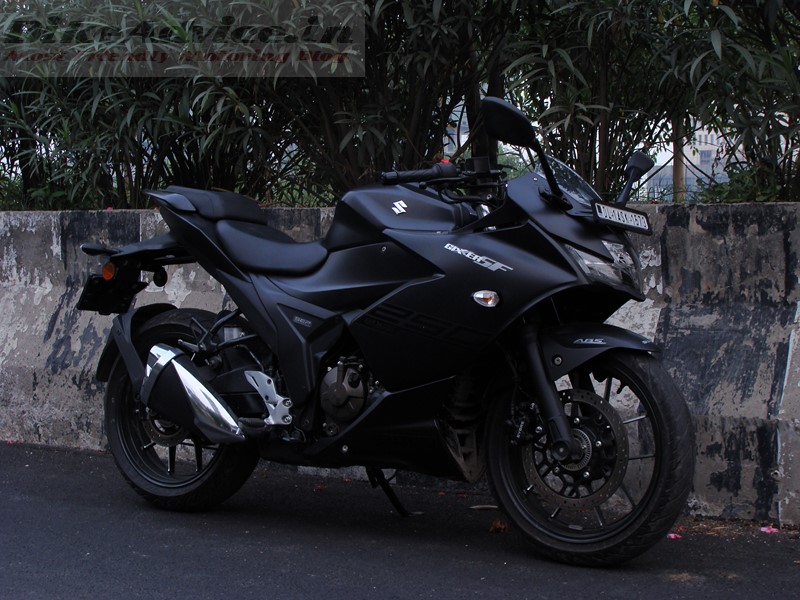
In fact, while shooting the aforementioned videos, I observed that it reminds you of the K8 600 and 750 Gixxers from the front three-quarters! This bike would have made grown men go weak in the knees had Suzuki given it an exhaust similar to the one on their GSX-R1000. That said, this one doesn’t look bad either, and since in the past five years I haven’t seen more than two Gixxer 150s on the road that had had their exhausts changed, I take it that the majority likes it.

Also, if you must know, the Suzuki Gixxer SF 250, even in this matte black shade, attracted quite a bit of attention, which is something the younger lot of buyers will definitely appreciate. And I just didn’t expect it to have better presence than the CBR 250 R, but it does!
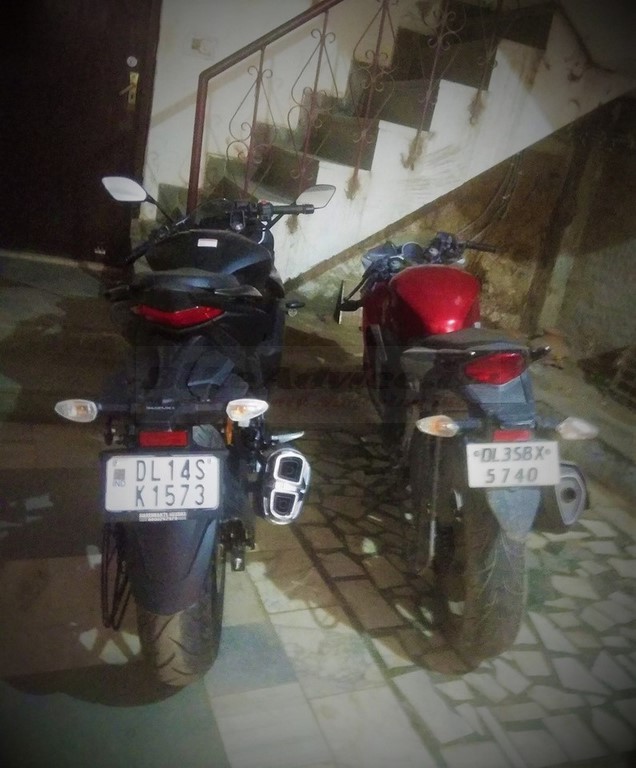
The build quality, fit & finish, paint texture—everything in this department is up to the mark as well. I like the alloys too, especially the classy touch given to the spokes. And I almost forgot to mention that I absolutely love the decals on this motorcycle! Why? Well you shouldn’t question anyone’s ‘love’; however, since you already have, the answer is: because they are subtle. And subtlety is a fine art.

But if you are someone who craves for flash, do not worry as Suzuki have also launched the MotoGP edition! My favourite shade? The one you see in these pictures.
Suzuki Gixxer SF 250 Review: Instrumentation and Ergonomics
Suzuki have carried the panache over to the instrument console as well. The 250 gets a negative LCD (dark background, white digits), which comprises a clock, two trip meters, fuel gauge, and a gear position indicator in addition to the obligatory speedo and odo displays. It also has an “Oil Change Interval” reminder, preset to come on at 1,000 km for the new bike. It did on our test bike. The second service is at 5,000 km (4,000 km interval) and it’s a 5,000 km interval thereon. So change the preset to 4,000 km after the first service (I would set it to 3,500 though), and to 5,000 km post that for every service. Yes, the bike allows you to do that. You do not have to depend on the service center chap for it. You may also change the rpm limit at which the white shift-light flashes, and you also have the option of switching it off completely. I didn’t bother.
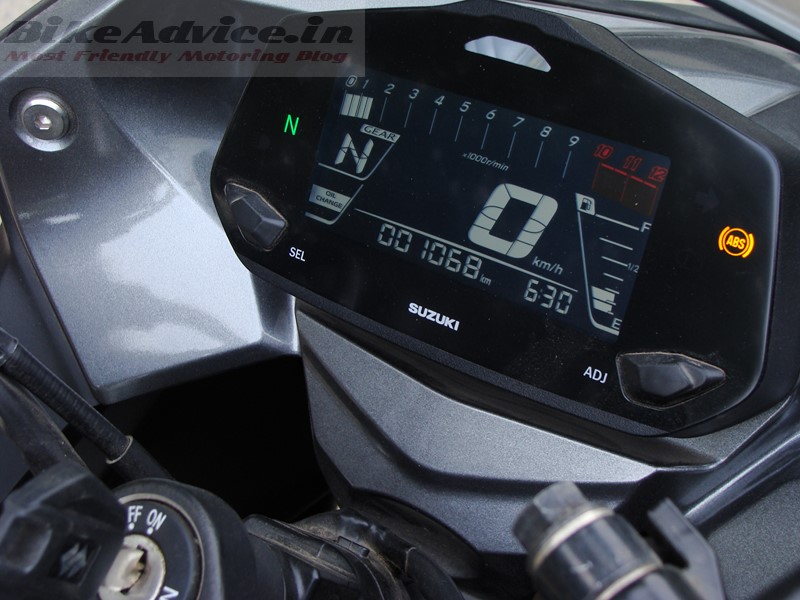
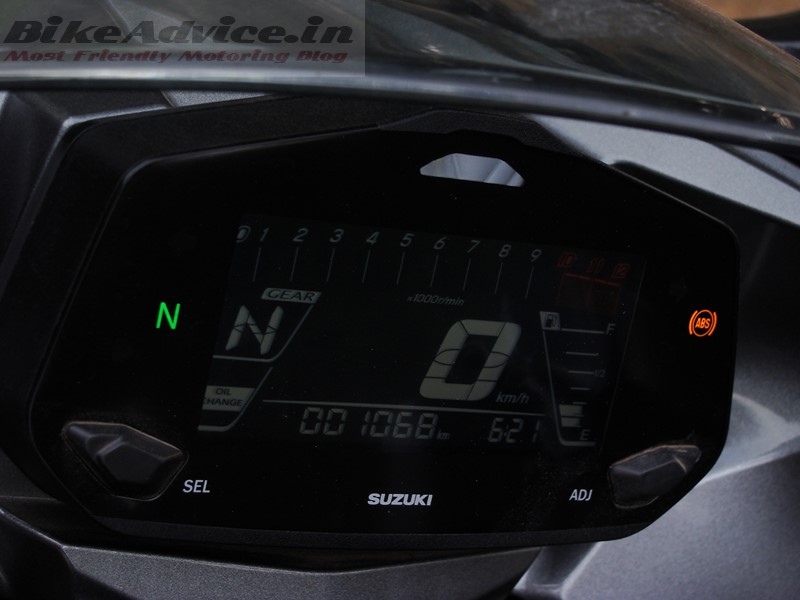
The SF 250 also gets a feature from Suzuki’s big bike range—the Easy Start System. I had talked about it in the Suzuki GSX-S750 Review, so do check it out if you want to know what it is.

Like the big Suzukis again, you have to pull the clutch (it’s light) in on the 250 as well before thumbing the starter. You do that and get to hear quite a raspy note for a single cylinder four-stroke, which should keep most of you happy. But let’s turn the engine off for a bit and talk about the ergonomics now, shall we?

This bike may look like a supersport, but Suzuki are calling it a sport-tourer, and you’ll agree with them the moment you swing a leg over and reach for the ‘bars. The clip-ons are not set in the basement; your hindside is not on the second floor, and your heels aren’t trying to kiss your butt either. The seating position on this motorcycle is exactly how it should be for a motorcycle which will be ridden by humans, and not the aliens who we know as MotoGP racers. Therefore, the riding posture is just sporty enough to remind you that “hey, it’s indeed that sporty full-faired motorcycle I saw in the pictures, and paid for“, but is considerate of your wrists, neck, and other parts of your body that might hurt on a supersport.

The seat height of 800 mm was manageable for even a five-footer like me; however, I suggest you take a test ride if you’re under 5’4″. Anyone taller will not face any issues. The rider in the pictures is my younger brother, who’s 5’9″ and 75 kg, and he loved the ergos of the SF 250. He rides a YZF-R15 V2. The saddle of the SF 250 is very comfortable and I can say the same for the pillion seat—a fact corroborated by a friend who has become my official pillion-seat tester. She’s 5’4″. She also found the distance, and angle, between the seat and footpegs to be really nice. You may remember that she had rated the Interceptor 650 as the worst on these parameters. Conversely, while swinging a leg over the RE’s saddle was a cinch for her, she had to use the kerbs to mount this Suzuki. The 250’s tail is almost as high as the Punisher’s (the R15 V2) as you can see in the picture below. However, once astride, the 250’s saddle is a comfortable thing to be on. It doesn’t slope down as much as the V2’s pillion seat, and there’s a sizeable difference in the padding as well.
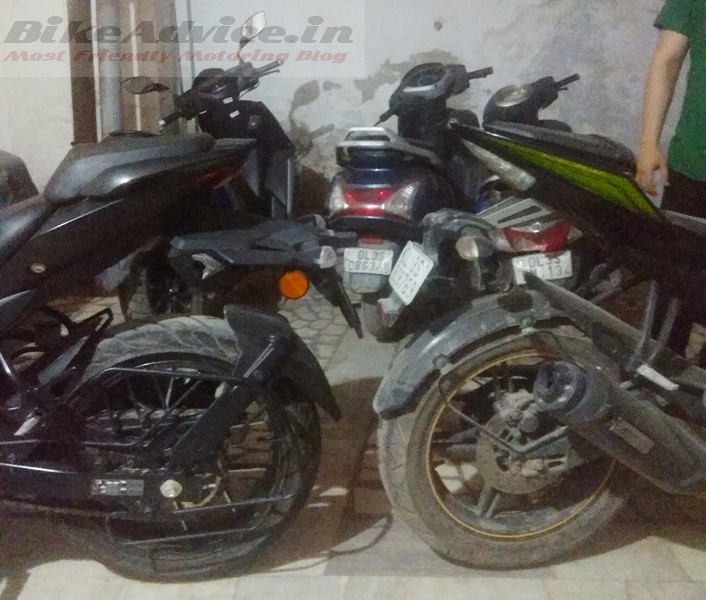
The SF 250 gets LEDs in the headlight and taillight assemblies. Also, unlike the Yamaha 250s, which have the pass function incorporated in the beam-select switch itself, Suzuki have given a separate, ‘traditional’, pass switch, which is much more convenient to operate. And you will be using it quite a bit as the high beam is high enough to sober down the drunk dorks who drive/ride with their high beams on. It doesn’t add much to your visibility though, but it doesn’t really matter as the low beam has a brilliant throw and spread, which will brighten up the darkest nights you may find yourself in. Also, for what it’s worth, a comment on the short video clip below reads, “that’s almost on the level of Dominar…“
The horn is anaemic though. In the past few years, I have been observing that almost all big bikes come with weak horns and that’s understandable too as honking is akin to abusing in the developed parts of the world. However, since our country has the maximum number of seemingly deaf people in the world, a loud horn remains indispensable if you have to reach home in one piece and without getting a stroke from people’s stubbornness on the roads.
Suzuki Gixxer SF 250 Review: Engine & Gearbox
Before I talk about how the Suzuki Gixxer SF 250 goes, rides, and stops, a few lines must be devoted to the gem of an engine Suzuki have given this motorcycle. This is a brand new engine made specifically for this motorcycle (and the variants Suzuki may have in mind for later). It’s a 249 cc four-stroke single with four valves operated by a Single Overhead Camshaft (SOHC). And it’s purely oil-cooled. Read that again: it’s not air- AND oil-cooled; it’s oil-cooled only.

It does not have the ‘fins’ you see on air-cooled or on air- and oil-cooled engines. Therefore, it looks like a liquid-cooled motor, but without the paraphernalia of liquid-cooling like a big radiator, fan, etc. Suzuki say that they wanted a lighter engine, which should also be simpler to maintain. That I agree with as less number of parts means less things to maintain, simple. Plus, other than the weight advantage, it helps in the aesthetics too as there is no ungainly plumbing visible to the naked eye. However, I still had my doubts. I mean, yeah, this company makes the Hayabusa, and are known for their quiet perseverance in achieving the impossible. I also know that they would have hammered this engine like none of us auto journos would ever be able to, but I’d be lying if I said I wasn’t still a bit sceptical. I think my formative years on air-cooled two-strokes are to be blamed.

Now, Suzuki say the world’s first oil-cooled motorcycle engine was developed by them, and that through continued development of this ‘quite unique’ technology, the company has been able to create smaller and lighter engines. They also add that the state-of-the-art technologies cultivated through MotoGP helped to further evolve this engine. For example, separate flow lines are used for lubrication and cooling. Unlike other oil-cooled units, this one apparently has a new cooling oil-flow line added near the combustion chamber to allow faster cooling over a wide area. Moreover, a newly adopted boundary layer breaker on the inside and outside of the oil jacket has improved the heat transfer rate. Sounds great, and reassuring. But, we should not be calling ourselves reviewers if we don’t test the manufacturers’ claims, right? And there was only one way to find out. Ride it so hard that the engine explodes, piston pierces through the tank, valves melt, and oil-cooler goes in a coma.
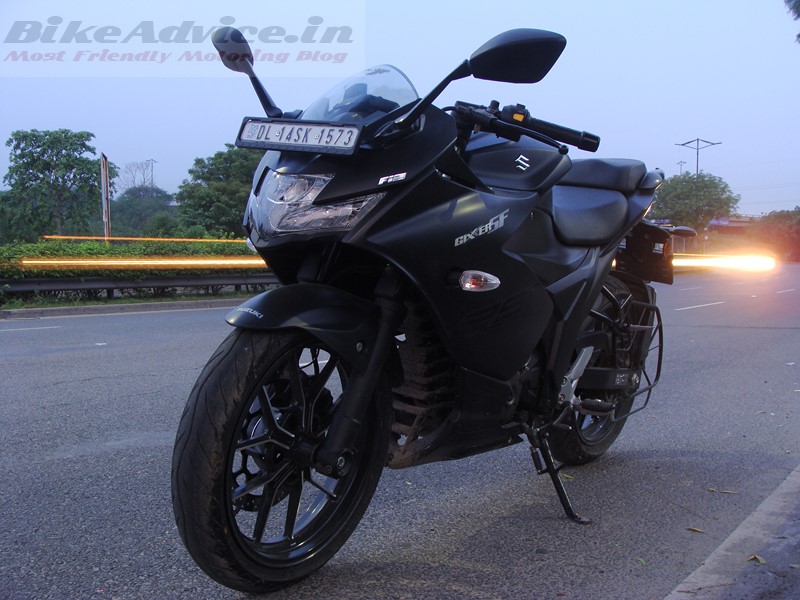
I tried, but NOTHING of that sort happened! Forget that, there was not even a millisecond drop in performance. Here’s what I was doing: I headed towards the road where I do my top speed tests and on the way I was challenged by this guy on an NS 200 for a race, and though I don’t give in easily, this time I made an exception. While at it, the bike recorded 153 km/h on the speedo. And I had done repeated 0-100 runs just before that! Thereafter, I was continuously above 120 km/h en route to not let the engine take a single sigh of relief. And then I pinned it fully. The rev limiter cut in at 154 km/h, and I allowed it to do that twice just to check if it would hit 155 km/h. It doesn’t, so 154 km/h it is.

I took a U-turn, repeated the run, and got the same result. Then I went to the spot where I do the acceleration runs, and repeated all of them again. Came back home and checked all the videos painstakingly (it is indeed a TEDIOUS task), and was pleasantly surprised to notice that there was not even a millisecond difference in any of the runs! And this was a bike that hadn’t even had its first service yet! So, ladies and gentlemen, Suzuki’s latest motor gets the BikeAdvice stamp of approval. Just do the initial running-in properly as prescribed in the manual (or ask us on our Facebook page or YT channel), and get the first service done on time as well. Thereafter, my friend, no matter how big a sadist you might be, you will fail to inflict even an ounce of pain on this engine. The slick-shifting 6-speed gearbox would remain unfazed too.
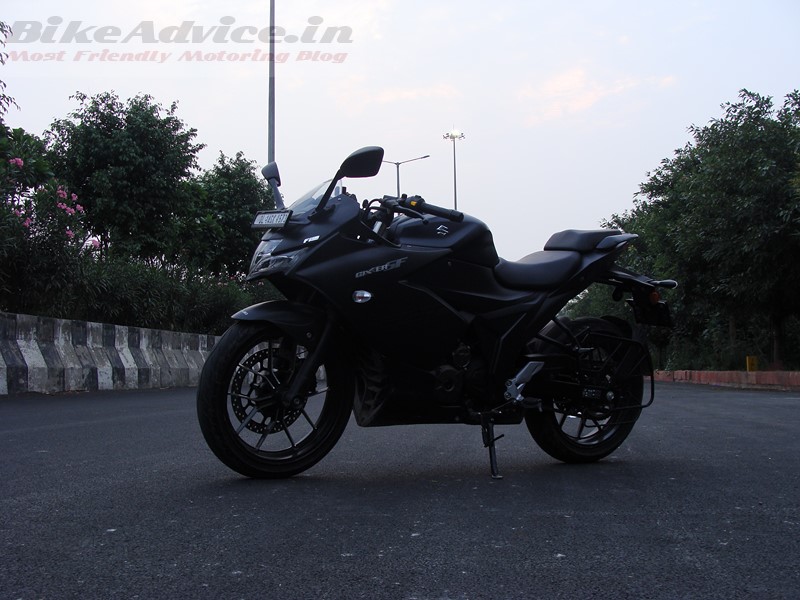
I must also mention here that there are two kinds of auto journos in India. The first type, the majority, would be those who read out the brochure to you, and just tell you that the drive goes to the real wheels (wheels?!) of the motorcycle, and other redundant stuff you already might know. The other type, the minority, would be those who would strive to tell you stuff that is NOT available in the brochure. Like, for example, the compression ratio of this motorcycle. I wasn’t able to attend the first ride event at the BIC, as I was on bed rest for almost two months, so when the first set of reviews started coming in, I had to watch/read them. As a thumb rule, you should not watch or read others’ reviews before publishing yours, as it may subconsciously play with your observations, but this time I just couldn’t resist. I wanted to know about the bike, and I watched and read every first ride review that came out.
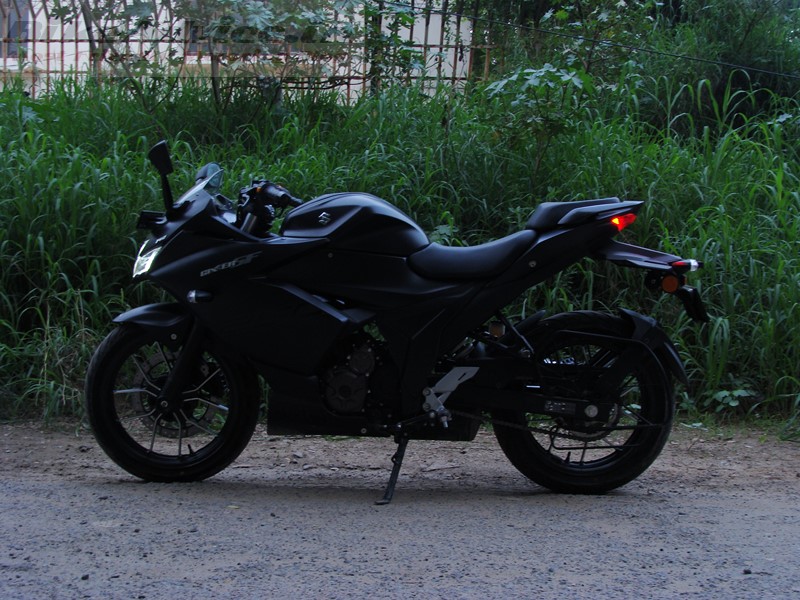
However, I was so highly disappointed with every single reviewer out there as not even one of them talked about the compression ratio of this motorcycle. I mean, for the first time ever we have a bike that is oil-cooled ONLY, and no one is bothered to know what the bike’s compression ratio is? Really? Not even the self-professed most senior motorcycle tester in the country? I should not be surprised. He explained the GSX-S750’s Traction Control levels incorrectly (according to him TC3 is the least intrusive). Anyway, that’s a story for some other day.
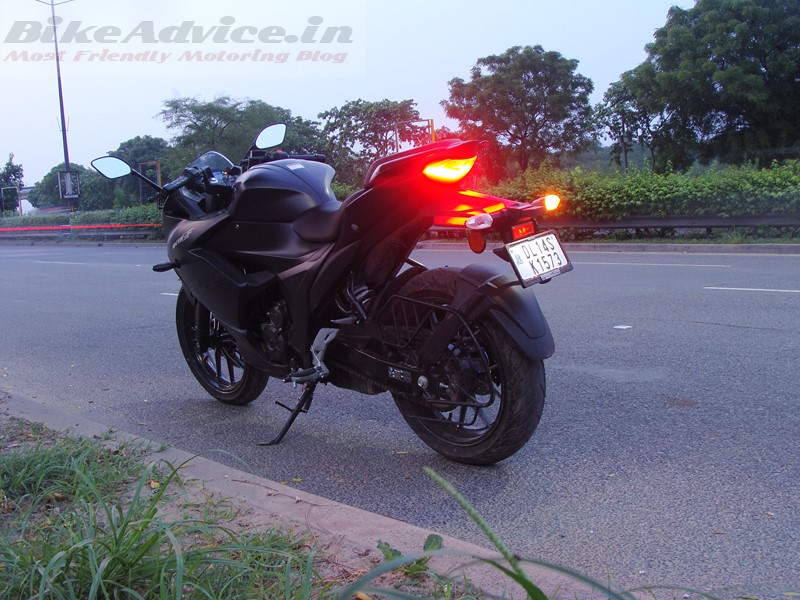
So let us tell you what the compression ratio of the Suzuki Gixxer SF 250 is, and please do not forget to stop and tell at least ten to seven people, at least, once a day on your way to work/college that you first read about it on BikeAdvice. And that’s the compression ratio of the SF 250 — 10.7:1. I have already told you above that how and why Suzuki think that their advanced oil-cooling technology would suffice in our conditions. Heck, they kept the media ride at the BIC in May! For those not in the know, that means the media bikes were ridden at the redline for an entire day in peak summers! Now I think I shouldn’t have had any doubts in the first place. You must also know that one of our readers, who owns both the Suzuki and Honda 250s says that the heat management is better on the Suzuki and it’s also more fuel efficient (by 5 km/l)!
Suzuki Gixxer SF 250 Review: PERFORMANCE — Acceleration, Top Speed, Braking, Ride Quality, and Handling
Since I have spoken a lot about the engine already, I’ll keep the rest of it short and simple. So here it is: the Suzuki Gixxer SF 250 is the quickest accelerating 250 cc motorcycle in India right now!
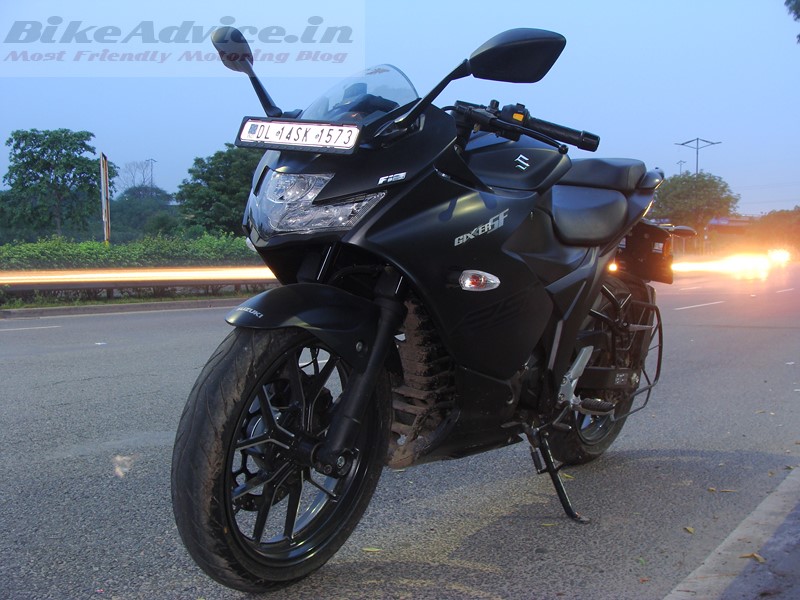
It snatches the crown from the Yamaha FZ 250, and though the recently launched Gixxer 250 might be smiling at the moment, the SF it is until I test its naked variant. The SF is six kilos lighter than the CBR 250 and that shows everywhere, be it in outright acceleration or in-gear thrust. The top speed is limited to 154 km/h, at which point the rev limiter cuts in. That’s more than enough for a 250 cc single. And before you crucify me for not sharing the power and torque numbers, here they are: 26.5 PS at 9,000 rpm, and 22.6 Nm at 7,500 rpm. Take a look below to understand more what those numbers translate to in the real world.
You may have noticed that I had to take my hand off a couple of times (my LS2 is showing its age finally), which should have given you more than a good idea about the bike’s stability even at 149 km/h. I don’t know how Suzuki managed that as, like I already mentioned, it is six kilos lighter than the CBR 250. Okay, the combination of low center of gravity and good tyre grip is the answer. Plus, even those 161 kilos play a significant role.
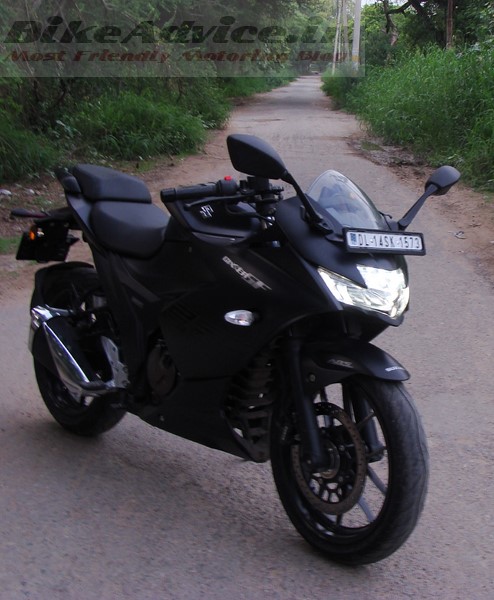
But I was certainly pleasantly surprised because the bike feels much, much lighter otherwise. A 161 kg machine has actually no right to feel like a 130 kg one even when you are pushing or pulling it in a tight parking lot with the engine off! Yes, that’s how light it feels. So how can such a light-feeling bike be this stable! In fact, in traffic it feels like its 155 cc sibling, which makes it effortless to ride in congested situations. If you’re someone like me with hardly any muscle power, and think that sportbikes require some amount of strength to ride, then this bike will blast such notions to oblivion. The effort required to ride this motorcycle is not more than, say, the effort it takes to get up from the bed, go to the washroom, and come back without getting tired. I am not exaggerating.
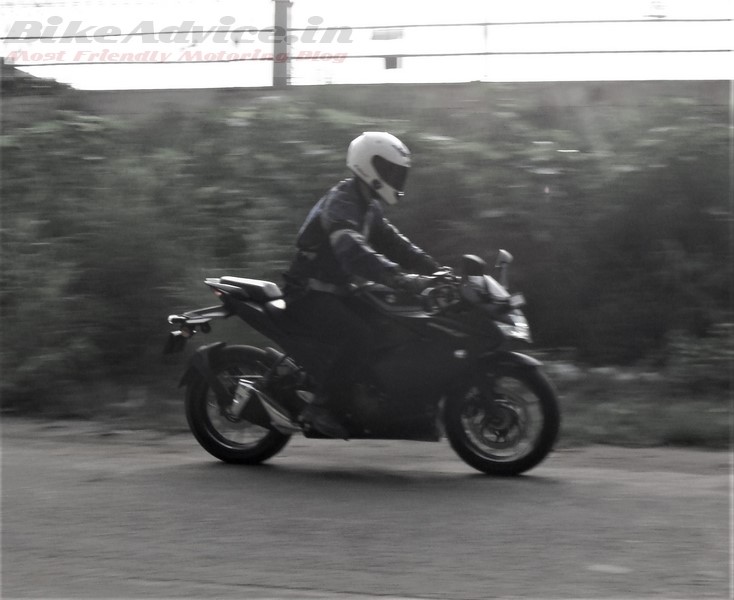
That lightness, along with a 24-degree rake angle (you won’t see this figure anywhere either) and the shortest-in-segment wheelbase of 1345 mm, makes this bike such a beautiful thing to throw into corners that you can’t help but think whether you really need bikes like the RCs and R15s for road use if you’re never going to take them to a racetrack. Of course, the RCs and R15s shall continue to rule at the tracks, but this Suzuki won’t be far behind there too. I would really love to see what this thing can do at the track in more capable hands than mine. In fact, I would urge Suzuki to make a Gixxer Cup variant of this one and have their best racers from across the Gixxer Cup classes (Novice, Expert, etc.) to race on them. While at it, give us poor online media guys a chance too to sample that bike!

Anyway, the crux is that the SF handles beautifully and won’t disappoint anyone on the road, irrespective of their skill level. The MRFs didn’t go out of shape ever during the entire length of the test, and though I am not someone who can drag his knee in every corner, I am ready to stick my knee, er, neck out and say that the tyre grip would suffice for even those who are more accomplished riders. The brakes are also something that will be liked by all. Suzuki have given this bike the biggest front disc (300 mm) in the segment while the rear follows the conventional (for the segment) size at 220 mm. The stopping power is fantastic, and though the feel at the lever is underwhelming, I can live with it. The brakes do their primary job effectively, and I’m content with that, thank you. The dual-channel ABS is also less intrusive than an inquisitive neighbour, so all’s good here as well.
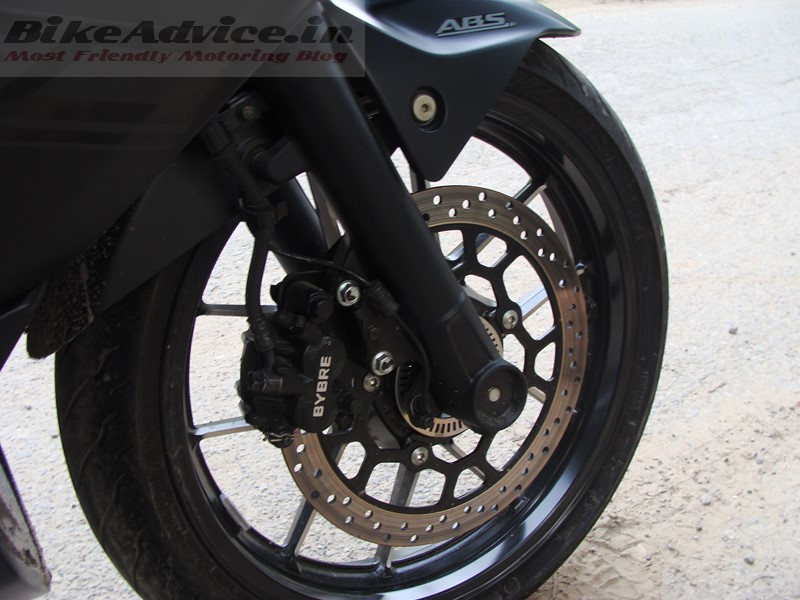
I won’t take much space to explain about the ride quality as well. “Balanced” would be one word to define it. To put it into perspective, if you keep the R15 V3 at one end and the CBR 250 R at the other, this Suzuki would fall somewhere in the middle, a shade towards the Yamaha. The ride quality is sublime, and I found the SF to be more composed than the CBR on bad roads as well. Suzuki have indeed made a phenomenal motorcycle.

Oh, the ground clearance, at 165 mm, is the best-in-segment too. Also, the bike does not bottom out on big speedbreakers with a pillion onboard. The monoshock is adjustable for preload anyway, and even the heaviest riders should be able to choose their sweet spot from the seven settings that it offers (it’s set at number 3 from the factory).
Suzuki Gixxer SF Review: Touring Ability — Vibrations, Windblast, and Fuel Efficiency
Let me confess that I have zero respect for people who ask me about “windblast” on a motorcycle. I mean, come on sissies, you’re riding a motorcycle. On the one hand you post all that crap on social media such as memes that talk about how all sports, excluding motorcycle racing, aren’t that dangerous because they require just one ball while a minimum of two are required for the latter, and then on the other hand you are concerned about windblast? Seriously? Whiners.

That said, since I have to answer all kinds of questions about motorcycling, let me tell you that this time the question would be valid. Suzuki are calling it a sport touring motorcycle; therefore, keeping that in mind, that stock visor is a joke. Sorry Suzuki, you should have provided a big windscreen on this one, period. But again, I think the chaps at Suzuki, while doing their market research, would have concluded that almost every second user of a faired bike in India replaces the stock windscreen of every darn sportbike out there, no matter how good it is! So I think Suzuki were thoughtful of all the accessory shop owners in Karol Bagh (it’s where at least 80 per cent of the NCR bikers go on Sundays), and of you too, as taking out that small visor won’t involve much labour.
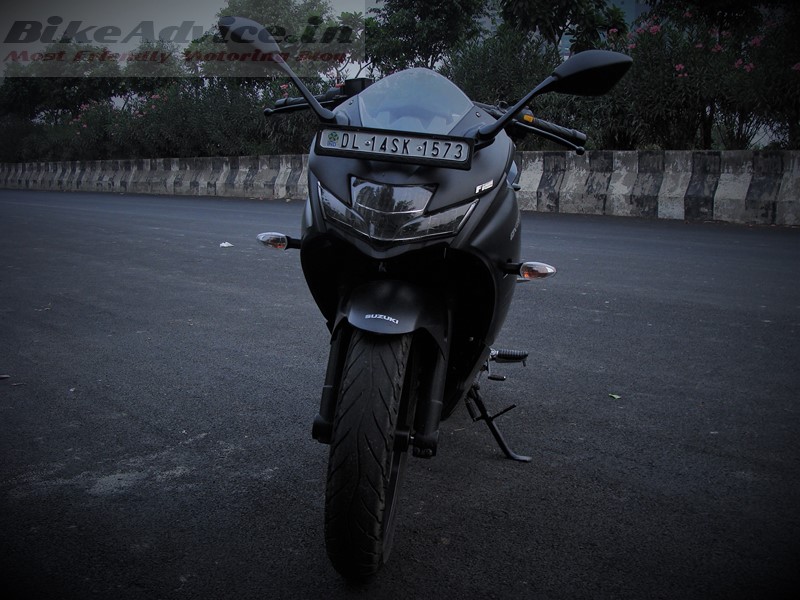
So, yes, the windblast is there. But I must tell you something here. I rode the Indian Chieftain (which protects you not only from windblast, but from cyclones, hurricanes, and alien invasions too) in our Bombay to Delhi travelogue, and the big windshield definitely works. A couple of years later I became the first journo in India to test the Indian Scout Sixty, which involved taking it from Delhi to Bombay. It didn’t have a windscreen. Heck, it didn’t even have that small plate which hides the wiring behind the topmost triple-tree clamp. Guess what, I definitely felt the wind blast, but my average speed was higher. Point is, windblast or no windblast, you’ll ride if you really want to ride.
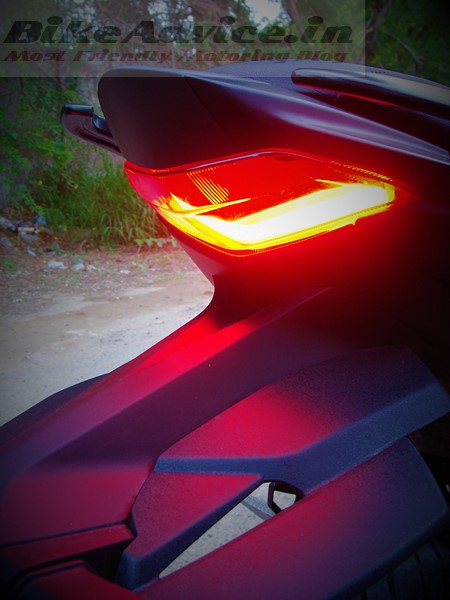

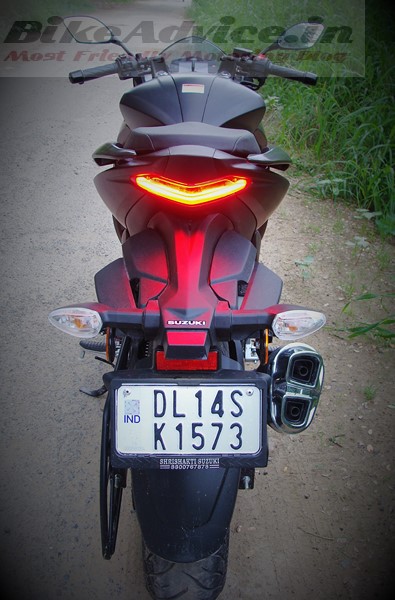
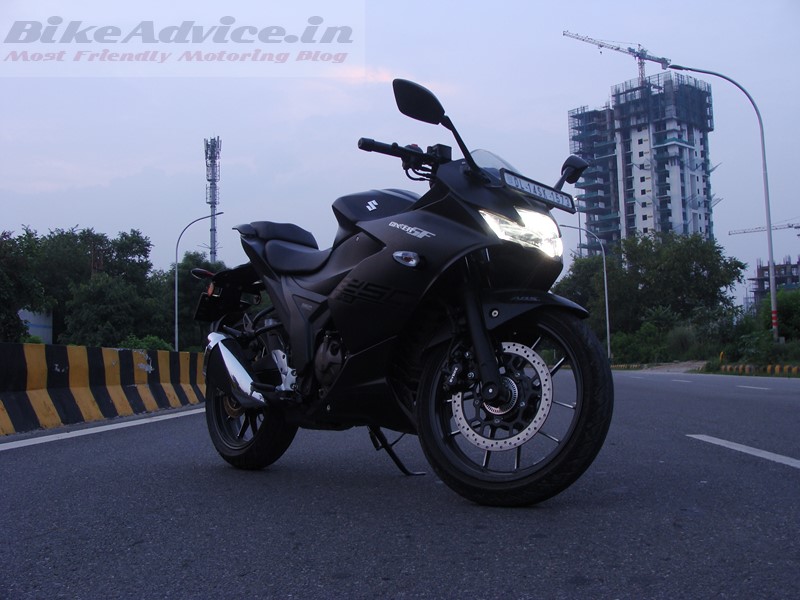
However, irrespective of the level of masochism involved in motorcycling, the vibrations are one thing that could always be a genuine concern. Fret not, the Suzuki passes this test as well. But it’s not completely devoid of vibrations. However, before I explain, you must understand something else too. See, when you’re testing something, you have to really, really focus on the stuff/parameter you’re testing. Like Charles Xavier searching for fellow mutants, good or bad, using Cerebro. We apply the same technique, but we are more talented, I guess, in that we do it with our eyes open, and with almost every part of our body acting like Cerebro, including our bottom. And like Professor X, we still mostly find what we’re looking for. Vibrations, in this case. But most riders might not.
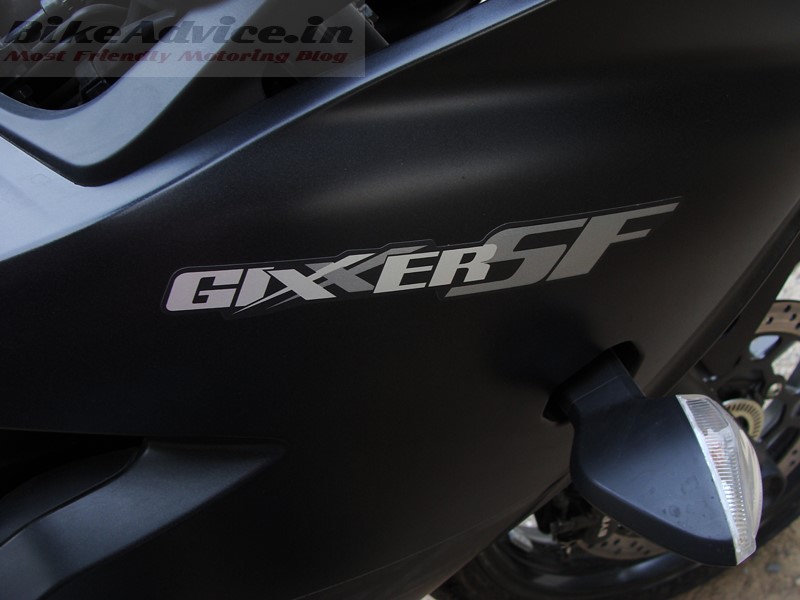
So when I tell you that there are absolutely NO vibrations up to 90 km/h in 6th gear, even if you’re riding stark naked, you will have to trust me. I didn’t ride naked of course; I am not into that kind of fetish, and I would recommend you to not do that as well, no matter how tempting that might appear to you. Now, from around 90-95 km/h to about 110 km/h you may feel a hint of vibrations on the pegs, but they are so mild that they might go unnoticed. Thereafter, say, from around 112-115 km/h onwards, the vibes do make their presence feel on the pegs and somewhat on your thighs too if you’re hugging the tank, but still nothing from the seat and the clip-ons. It stays like that up to around 130 km/h. Thereafter the vibrations increase a bit, but stay there without any incremental spikes as you take the bike to its limit. And even then the ‘bars and seat remain completely free from vibrations. The crux is: you can cruise between 90 to 120 all day comfortably, and can also hold on 140 km/h for any duration allowed by your conscience, road surface, and traffic.
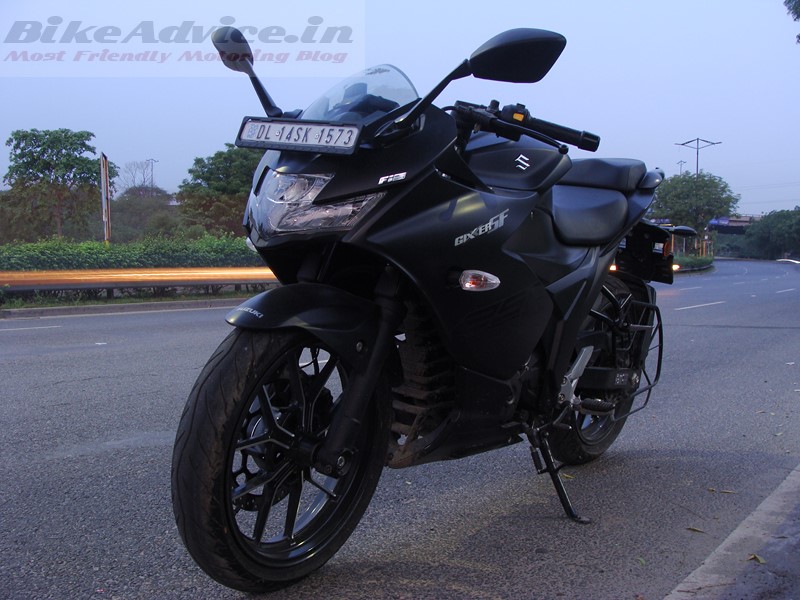
I did the cliched bottle test as well for you guys; here, do take a look:
Let me reiterate that bike was fairly new and it hadn’t had its first service. So I am expecting the vibrations to further diminish after the first service. I also reckon the fuel efficiency to get better. In this test, it gave an incredible 36.5 km/l! The ARAI figure claimed by Suzuki is 38.5 km/l. I would not at all be surprised if owners come back and tell me that they are able to extract anywhere between 38-40 km/l or perhaps even more than that with a careful right hand.

Therefore, with a 12-liter fuel tank, the full tank range should be above 400 km. Please note that once the fuel level drops below three liters, the fuel sign, located at the top left of the fuel gauge (near ‘F’) starts to blink. The lowest fuel bar (just above ‘E’) quietly sits there at the moment. Once the fuel level drops below 1.2 liters, that’s when the lowest fuel bar starts to blink with “Fill it up now, you Miser!” displayed in the middle of the screen. Okay, I made up the last part. But, trust me, though you could take chances with bikes that had/have carburetors, you should never run an FI bike dry!
Suzuki Gixxer SF 250 Review: Verdict
If, after 4,300 words, you still need a verdict, then I really do not know what to say to you. I guess I’ll use Dominic Toretto’s line here, but I’ll modify it a bit. He had said, “if you can’t find the right tool in this garage, Mr. Arizona, you don’t belong near a car.” I say, “if you can’t make up your mind after reading this review Mr. Procrastinator (you know you’re one), you don’t belong near a motorcycle.”


